Home> Company News> Determination of amino acids in 8 raisins in Xinjiang by microwave digestion
- AddressNo.4087 SHAHEXI ROAD, TIAOQIAO DISTRICT,JINAN,CHINA
- Factory AddressNo.4087 SHAHEXI ROAD, TIAOQIAO DISTRICT,JINAN,CHINA
- Worktime9:00-18:00
- Phone(Working Time)0531-85064681
- Phone(Nonworking Time)86-18660125156
- Fax0531-85064682
Determination of amino acids in 8 raisins in Xinjiang by microwave digestion
2018-10-22 15:11:37The content and composition of 17 amino acids in 8 kinds of raisins peculiar to Xinjiang were determined by microwave-assisted extraction of acid-hydrolyzed protein from raisins and Hitachi L-8900 automatic amino acid analyzer. The hydrolysis conditions of microwave drying equipment were optimized. The results showed that the amino acid content obtained by microwave hydrolysis at 160 C and 30 min was basically the same as that obtained by traditional heating hydrolysis (110 C, 22 ~ 24 h), and the hydrolysis time was shortened. The linear range of 17 amino acids ranged from 1.0 to 80.0 micromol/L, and the linear regression coefficients were all above 0.999. The detection limit of the method was between 0.06 and 9.83 micromol/mL-1. The recoveries were 81.0% to 102.2%.
China is one of the major raisin producers in the world, especially the green raisins produced in Turpan, Hami and other places in Xinjiang, which have always been the hot products on the domestic and foreign markets. Raisins are rich in nutrients, including carbohydrates, dietary fiber, protein, calcium, phosphorus, copper, iron and other trace elements as well as a variety of organic acids.
Amino acids are the components of proteins. Amino acid analysis plays an important role in protein chemistry, biochemistry, food science, clinical medicine and other fields. Therefore, the study of amino acid analysis method has been highly valued. The traditional method for determination of amino acids in hydrolyzed protein is heating 6 mol L-1 hydrochloric acid at 110 C for 22-24 hours. The hydrolysis time is longer. Therefore, a rapid pretreatment method for determination of protein-bound amino acids in raisins was established by combining microwave technology with amino acid analyzer. The microwave hydrolysis of raisins was investigated. The test conditions of protein were compared with the traditional method and the microwave method of raisin drying equipment. The aim is to provide reference for the application of microwave assisted technology in raisin sample pretreatment.
8 raisins were sold in the market. Hitachi L-8900 Automatic Amino Acid Analyzer; Microwave Digestor; Thermostat; Nitrogen Blower; Ultra Pure Water Analyzer; Pressure-resistant Screw Cover Glass Tube: Volume 20-30 mL, etc. Concentrated hydrochloric acid (high purity); H-amino acid mixed standard solution; Re-steaming phenol; Ninhydrin reagent; High purity nitrogen (purity 99.99%).
Conventional hydrolysis method: accurately weigh 0.2 g (accurate to 0.0001 g) raisin sample in the hydrolysis tube, add 10 mL 6 mol L 1 hydrochloric acid, then add 3 ~ 4 drops of re-evaporated phenol, whirlpool oscillation 3 minutes after freezing 5 minutes, vacuum filled with high-purity nitrogen, tighten the pressure-resistant screw cap in the nitrogen-filled state. The hydrolysis tube was placed in a drying oven at 110 degrees C for hydrolysis of 22~24 h and removed. Carefully open the hydrolysis tube after cooling, transfer the hydrolysate to 100 mL volumetric flask, fix the volume with deionized water, and filter. 1.00 mL filtrate was blown and dried in 5 mL centrifugal tube, then 0.02 mol/L hydrochloric acid solution was added to 1 mL. After mixing, it was filtered by 0.22 micron filter membrane and put on the machine. Tryptophan was destroyed completely when hydrolyzed by this method, so it could not be measured.
Microwave digestion method accurately weighs 0.2 g (accurate to 0.0001 g) raisin sample in the digestion tank, adding 10 mL 6 mol L 1 hydrochloric acid (containing 1% phenol), vacuum filling nitrogen, tighten the lid, put into the microwave digestion instrument, control hydrolysis at different temperatures and time, after hydrolysis cooling to room temperature, solution, will be. Microwave digestion solution was transferred to 50 mL volumetric flask, filtered and absorbed 1.00 mL digestion solution was dried by nitrogen blower, dissolved by 0.02 mol L 1 hydrochloric acid and filtered through 0.22 micron membrane. The filtrate was analyzed by amino acid analyzer.
The flow rate of conditioned buffer was 0.40 mL min-1, the flow rate of ninhydrin solution was 0.35 mL min-1, the detection wavelength was: proline was detected at 440 nm, other amino acids were detected at 570 nm, the protective column temperature was 57 C, the reaction column temperature was 135 C, and the injection volume was 20 mu L. The content of each amino acid in the sample solution was determined by external standard method. Two
RESULTS AND DISCUSSION: 17 kinds of amino acids were determined by the above amino acid analyzer. The chromatograms of 17 kinds of amino acids were shown in Fig. 1. It can be seen from the diagram that 17 kinds of amino acids were determined within 35 minutes, and 17 kinds of amino acids had good separation degree and peak type under this chromatographic condition. Fig. 117 chromatograms of standard amino acids.
Microwave temperature optimization: fixed microwave power 300 W, hydrolysis time 60 min, by changing the hydrolysis temperature to investigate the change of amino acid content. Table 1 shows that the total amino acid content obtained by hydrolysis increases gradually with the increase of temperature. The content obtained by hydrolysis is basically the same as that obtained by traditional hydrolysis method at 160 C. Most of the amino acid content decreases when the temperature is higher than 160 C. The contents of alanine, isoleucine and tyrosine increase slightly, so 160 C is the best one. Good hydrolysis temperature.
Optimization of microwave time: fixed microwave power of 300 W, hydrolysis temperature of 160 C, by changing the hydrolysis time to investigate the change of amino acid content. The total amino acid content of the hydrolysate increased gradually with time. The content of some amino acids decreased slightly when the hydrolysis time was longer than 30 minutes, which was probably due to the destruction of individual amino acids.
Linear range and detection limit: 17 kinds of amino acids were accurately prepared in the mixed standard solution of 1.0, 2.0, 10.0, 30.0, 50.0 and 80.0 micromol/L, respectively. According to the best microwave hydrolysis conditions explored above, the standard curve was drawn with peak area as Y value and detection concentration (micromol/L) as X value.
The linear equations and correlation coefficients of the 17 amino acids are shown in Table 3. From the table, we can see that 17 kinds of amino acids have good linear range. The linear correlation coefficient of standard curve is above 0.999. The detection limit of 17 kinds of amino acids is between 0.06 and 9.83 ug.mL-1.
METHODS The recovery rate: The raisins were selected as samples, and 17 kinds of amino acid mixed standard solution were added to the samples. The results were determined according to the experimental method of microwave optimal hydrolysis conditions. The results showed that the recovery rate of this method was 81.0%~102.2% and RSD (n=6) was less than 8.8%. It showed that this method was accurate and feasible for the determination of amino acids in raisins.
Comparison of amino acid content in raisins from Xinjiang Table 5 shows that among the 8 raisins, the content of amino acids is the highest, and the contents of aspartate, glutamic acid, glycine, leucine and phenylalanine are obviously higher than those of the other 7 raisins. These amino acids belong to medicinal amino acids, indicating that the raisins are not only tasty, but also very good. Medicinal value, regular consumption has health care function.
Conclusion:
Microwave hydrolysis technology was used to pretreat Xinjiang raisins, and the method of rapid determination of amino acids in protein in raisins was studied. Compared with conventional methods:
(1) the optimized conditions for microwave hydrolysis test were satisfactory for the determination of sensitive amino acids.
(2) The hydrolysis time of protein by microwave is greatly shortened, and the hydrolysis speed of protein is greatly accelerated. The traditional method takes 22-24 hours to hydrolyze protein by microwave, but only 30 minutes to hydrolyze protein by microwave, and the work efficiency is improved more than 40 times.
(3) Microwave-assisted technology is suitable for the pretreatment of batch samples, and has the characteristics of fast, simple, efficient and environmental protection.
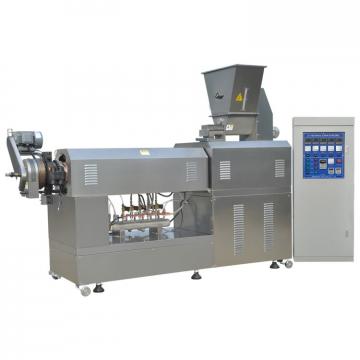 Factory Fruit and Vegetable Processing Machines/Quick Frozen Line/Food Processing Production Line for Daylily Production Line with High Output
Factory Fruit and Vegetable Processing Machines/Quick Frozen Line/Food Processing Production Line for Daylily Production Line with High Output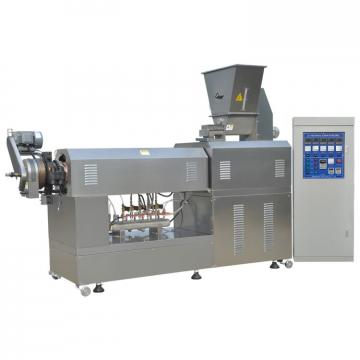 Factory Direct Sales PS Styrofoam Food Container Production Line
Factory Direct Sales PS Styrofoam Food Container Production Line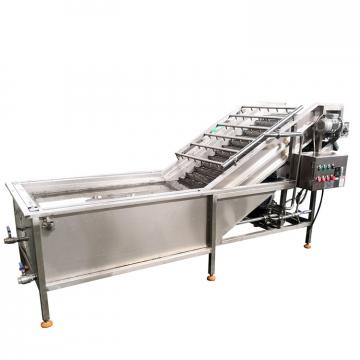 Complete Pure / Mineral Drinking Bottled Water Production Line Factory in Beverage / Food Area
Complete Pure / Mineral Drinking Bottled Water Production Line Factory in Beverage / Food Area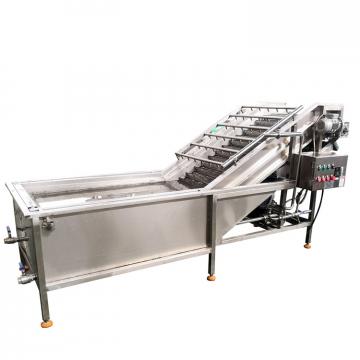 Cheetos Fried Food Production Factory Extruder Processing Line
Cheetos Fried Food Production Factory Extruder Processing Line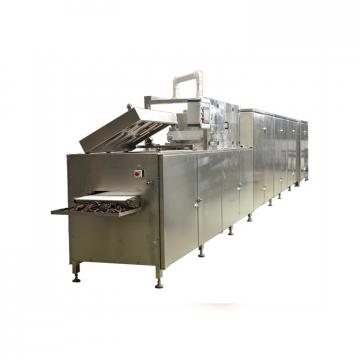 Automatic Mini Food Factory Macaroni Processing Line Pasta Production Line
Automatic Mini Food Factory Macaroni Processing Line Pasta Production Line
